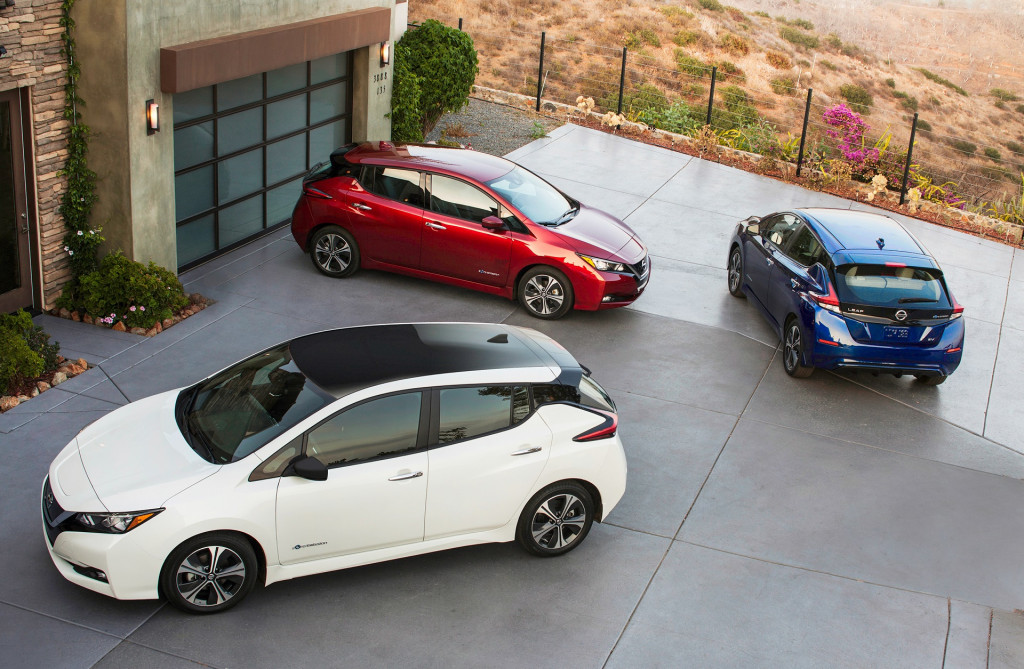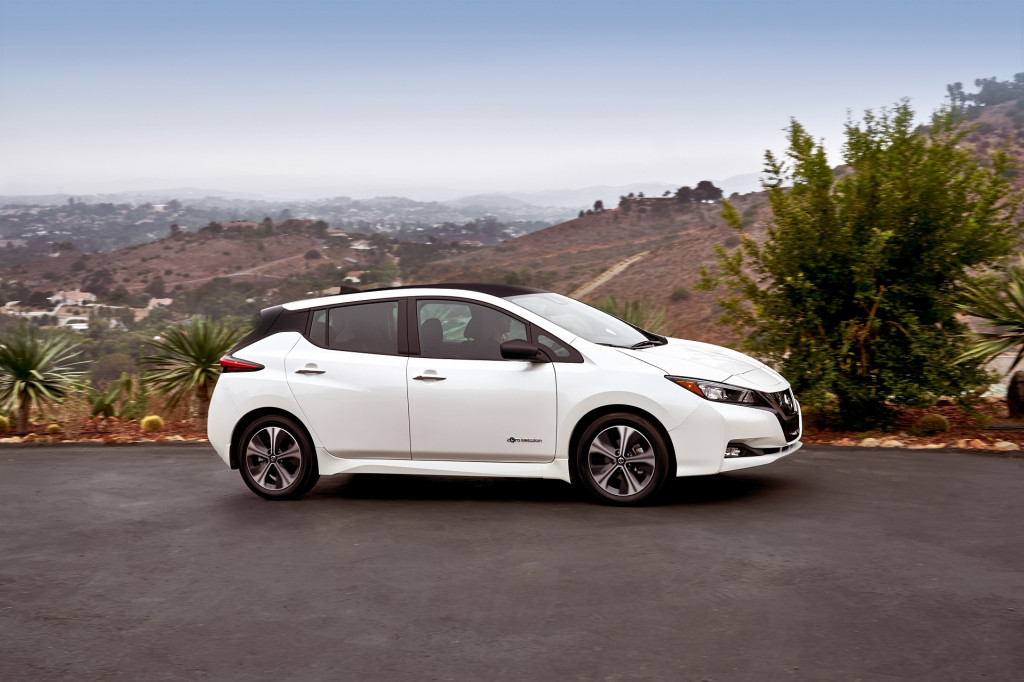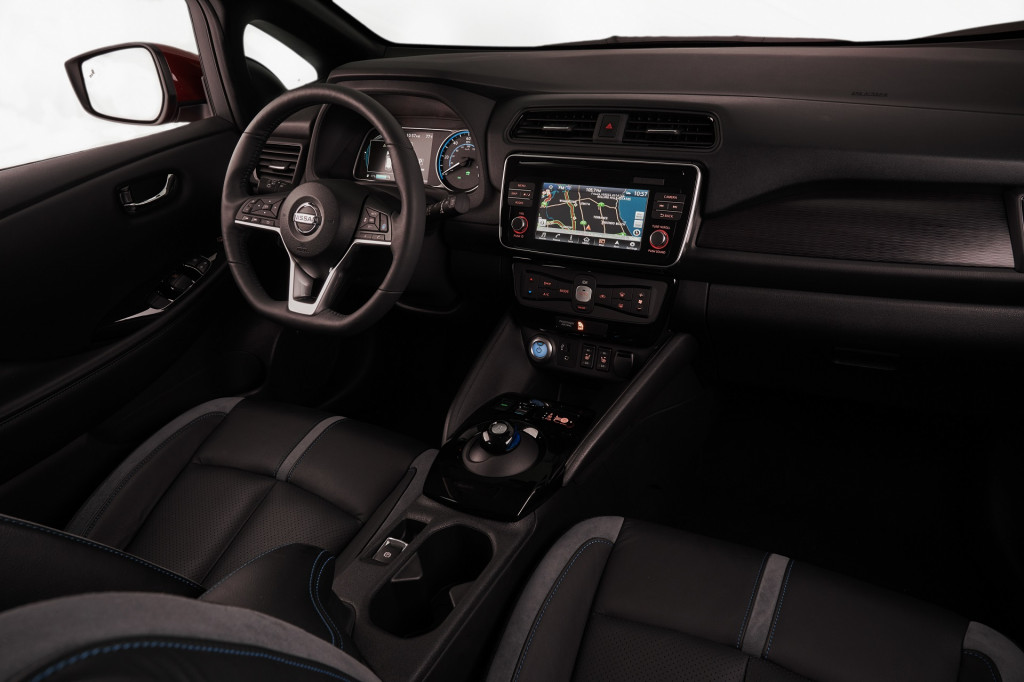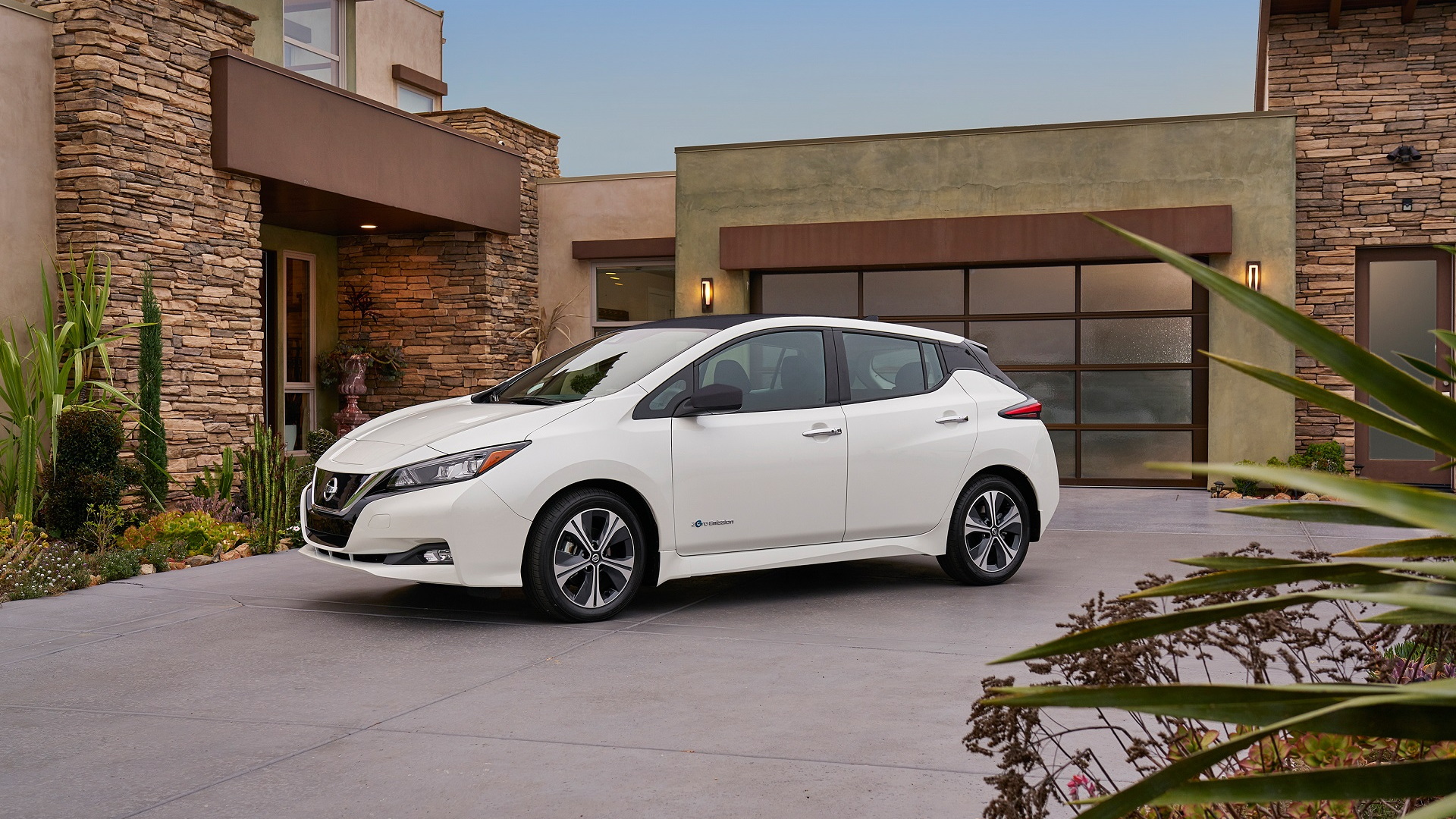When visiting an automaker's proving ground to drive cars still under development, security is extensive.
Cameras have to be left on the bus, all phone lenses have to be covered, and documents committing you to keep quiet until the embargo lifts must be signed.
In late June, we drove a pre-production 2018 Nissan Leaf at the company's Tochigi Test Field. Now, we can finally share our impressions.
DON'T MISS: 2018 Nissan Leaf debuts: 150 miles for $30,875, 200-plus miles next year
We don't have any photos from that event, but we came away with 10 pages of closely-spaced notes from our driving time plus numerous executives presentations and one-on-one interviews.
The bottom line is that the 2018 Nissan Leaf is a better vehicle in almost every respect against its predecessor—but it's far from an entirely new car.
Thinking it over afterward, our main impression is that the 2018 Leaf puts Nissan's electric car back into contention, but has few truly "wow!" features that set it apart from competitors.

2018 Nissan Leaf
It would have made a great mid-cycle update in 2016, when the 107-mile battery pack arrived in the first-generation car—and it would have gotten Nissan out in front of the Chevy Bolt EV with a fresh new vehicle to talk about.
As it is, with the longer-range version and 200-plus miles of range not due until next year, we might give it a grade of B: good effort, largely fulfills the assignment, but not a standout.
A few high points from our packed day of interviews and driving within the proving grounds:
READ THIS: US electric-car market data offers reality check as 2018 Leaf arrives
DESIGN
The first Nissan Leaf stood out; the 2018 Leaf is simply another small Nissan. The design team clearly heard that many buyers felt it had gone too far, and as a result, almost all of the quirks have been removed from the new shape.
A special Launch Edition in white with a glossy black roof stands out; expect it to be offered on a limited basis early in the car's run.
The interior, too, is largely Nissan-standard, a more modern interpretation of what you'd expect to find in a Sentra or Altima passenger car.
In fact, aside from a couple of badges and the mushroom-shaped drive selector, unaware drivers might never know this was an electric car from behind the wheel.

2018 Nissan Leaf
PERFORMANCE
The 2018 Leaf has the spunky pickup and smooth acceleration from a stop that its predecessor and for that matter most electric cars offer.
The difference is that where the old Leaf started to run out of breath at higher speeds, the new maintains stronger acceleration above 60 miles an hour, allowing a greater margin for sudden highway maneuvers.
That's due to a motor that's almost 40 percent more powerful: 110 kilowatts (147 horsepower) and 236 pound-feet of torque, against 80 kw (107 hp) and 187 lb-ft in the old car, with only 100 pounds or so of extra weight.
CHECK OUT: 2018 Nissan Leaf to have e-Pedal: here's what that means
The so-called e-Pedal function, meanwhile, eliminates idle creep to provide one-pedal driving with seamless integration of the friction brakes and regeneration function.
Friction brakes are used to mimic regen if the battery can't charge because it's very cold or already fully charged. They also lock when the car has stopped, in e-Pedal mode, even if the driver's foot is lifted—releasing when the accelerator is pressed.
It all works intuitively, and it's the only way we'd choose to drive any electric car that offered it.
The "B" setting on the drive selector offers an intermediate setting that increases regenerative braking over that in the standard mode, which mimics the behavior of a conventional car with an automatic transmission.

2018 Nissan Leaf
COMFORT and QUALITY
Noise is a funny thing in electric cars: the first-generation Leaf was notorious for requiring the development of specially quiet windshield wipers, because conventional Nissan units proved too noisy without engine noise to mask them.
The company put a great deal of effort into reducing cabin noise in the 2018 Leaf, and it shows.
They range from a stiffer structure and extensive computer modeling of noise and vibrations to acoustic glass in the windshield and insulation specially designed to absorb whine from the motor and electronics.
The result is that the new Leaf is noticeably quieter than the 2017 model.
Engineers noted that stronger reinforcements in the corners of the hatch, along with more acoustic insulation in the rear wheelwell area, made a major difference, but we'd suggest the 2018 Leaf is now among the quieter mass-market cars of its size.
SAFETY and ADVANCED FEATURES
Nissan expects the 2018 Leaf to earn top safety ratings, and pretty much every advanced safety feature the company has in its arsenal will be available as standard or optional equipment.
The 2018 Leaf will also be the first application of ProPilot Assist, essentially the ability for the car not only to follow vehicles ahead and stay within a safe distance but also to center itself within the lane markings.
We were able to experience this in a brief, controlled drive on the test track, and it worked suitably well.
A parking-assist feature that steers the car into a parallel parking space was less satisfactory; it failed to work once due to slightly worn markings, and proved extremely slow in practice.
On the other hand, to be fair, it was a feature in development and it's not clear at present whether it will even be offered on North American Leafs.
Nissan provided airfare, lodging, and meals to enable High Gear Media to bring you this first-person report.
_______________________________________




















